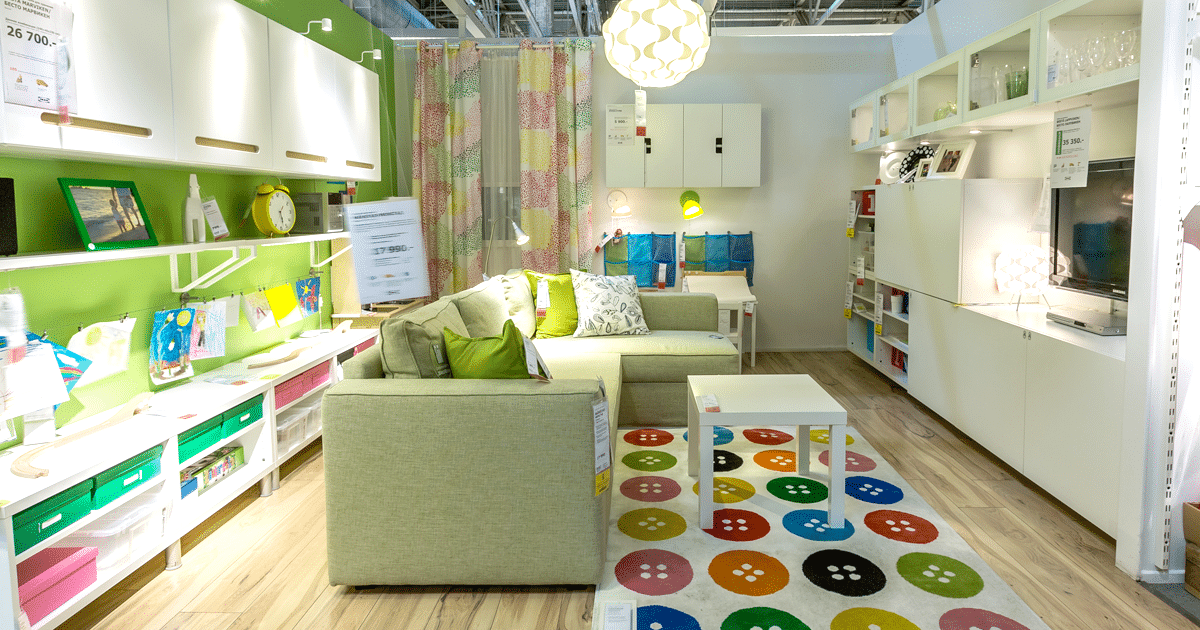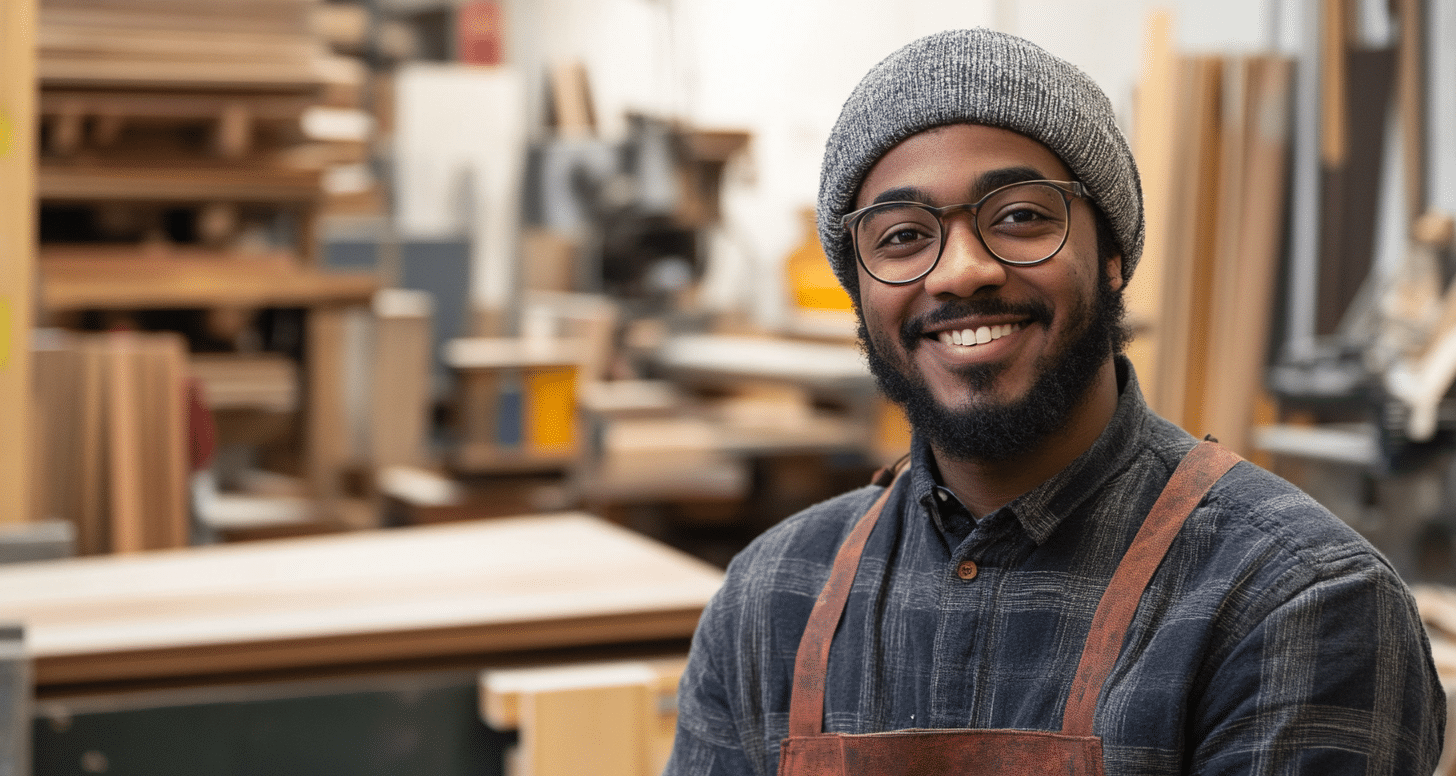Well, the 2017 IKEA catalog has arrived and already I feel a love-hate relationship brewing. Sure, a love-hate anything is probably not healthy, but let me clear my cluttered desk with a quick swoop of the arm (oops—grab coffee cup before it topples) and settle into my quiet chaos as I explain.
The IKEA brand boasts clean lines and organized living, not to mention fabulous meatballs and short pencils you can pop in your pocket if you choose to walk away with something other than furniture on a visit to any IKEA store. Seeing everything in its proper place—on shelving and on hooks, in bins and in baskets—is truly inspiring, and definitely worth loving on page after glossy page. But picture-perfect configuration can be deflating, too, (hence the hate part) if you scan your home and are smacked with strewn knapsacks, a scattering of shoes, and a tornado of toys.
It’s easy to grant yourself a pass, and that’s more than fair. Comedian Phyllis Diller once said, “Cleaning your house while your kids are still growing is like shoveling the sidewalk before it stops snowing.” How true! And with limited hours in any day, it goes without saying that meal prep, bath time, and homework help take priority over placing toys in bins and dirty laundry in baskets.
If you can mentally compartmentalize the clutter, seeing disarray as an inevitable part of family life and nothing worth fretting about, then perhaps the mess is manageable. But, like many parents, you may feel frustrated when you can’t find your keys, and distressed when a toy underfoot sends you soaring. And let’s face it, disorganization can be a huge time sink. If you can’t find a costume, you’ll be late for the recital. And if you’ve just found your child’s agenda, you’ll be putting the first and final touches on a project the night before it’s due.
So how can IKEA help? If a shiny new kitchen isn’t in your future, no worries. Open the IKEA catalogue and have a look. There are lessons to be learned.
“Like what?” you ask.
Cue discussion on James J. Gibson.
Stick with me. I promise this detour will make sense.
J.J. Gibson taught psychology at Cornell University and studied perception. He was most interested in how we see the world, and how we interact with the things we see in it. Gibson coined the term “affordance.” An “affordance” is a cue or quality an object projects indicating how we should interact with it. For example, a teapot sends cues to pour, a doorknob sends cues to twist, and buttons on your keyboard send cues to press. Gibson would say that the teapot affords pouring, the doorknob affords twisting, and the keyboard affords pressing. When the cues are clear, interacting with the environment should be a snap!
But what happens when cues are unclear? Have you ever pushed a door instead of pulled? Have you ever fumbled for the right lid at Starbucks, not quite sure which one will fit your coffee cup? Have you ever walked through a pane of glass—or at least tried to walk through it—because there were no cues that the glass was even there? Believe me, I am guilty, on all counts, and maybe you are, too.
Gibson would say that none of these foibles are our fault. He would argue that the environment failed to project effective cues for directing our actions (translation: it’s the door’s fault). Maybe the handle on the door looked more decorative than functional, and 10 out of 10 birds would agree that stickers on windows divert disaster, emitting cues that scream, “Don’t fly here!” Without them, of course you’ll try to walk or fly through glass. When coffee lids are clearly labeled on a rack according to size, you’ll probably grab the right one on the first try. And while we’re talking coffee, ordering from Tim Hortons is way easier than Starbucks, at least for me. Small, medium, large, and extra-large are clear cues about sizing. But short, tall, grande and venti? Which is biggest? Beats me, which is why I resort to pointing to the cup I want and saying, “that one.” Again, Gibson wouldn’t fault me for my Grande Failings, though perhaps a second language would help. But I digress. Let’s get back to IKEA.
The IKEA catalogue projects really clear cues about how we should use their products and live our lives. Coat hooks afford hanging (on the wall at the entrance), canisters afford storing (in the kitchen or on your desk), shelves afford lining (books in your office), and baskets afford catching (stray items from throw pillows to laundry). In the IKEA home, clear cues afford actions that keep everyone organized. Now think about your home. Better yet, think about your child’s bedroom. Is it messy or organized? Are there clear cues about where things should go? Or does everything end up in piles, resulting in endless frustration and appeals from you to clean things up?
Let’s talk brain, specifically the frontal lobes located directly behind your forehead. The frontal lobes are important for executive functioning skills like stepping back, organizing strategies and materials for problem-solving, getting started on big tasks, and getting things done within agreed-upon timelines. Cleaning a room is a huge executive functioning task, with many steps and strategies important for success. Young brains with developing frontal lobes (that are still developing into early adulthood!) will need support. And so will children and teens with Attention Deficit Hyperactivity Disorder (ADHD) who struggle to get organized and who are easily distracted once they start a task, often not seeing things through.
It seems to me you have a couple of options for providing support. Stand at the doorway and direct your child every step of the way until the room is clean (warning: this could be perceived as “nagging”), or ‘outsource the nag’ and let the environment do the heavy lifting. Start maximizing cues that afford tidying up and getting organized—for you and your child. Here are 4 strategies to get you started.
Start with the hot spots: Cueing up your entire home with affordances that keep everyone organized may be a tall order, so start with the hot spots. The entrance where everyone dumps their coat and shoes might be a great place to start. Coat hooks with name plates or photos will send clear signals of who hangs what where. Shoe outlines on the floor that vary in size might also be fun and bust the cycle of dreaded shoe pileups. Next stop—your child’s bedroom.
Maximize cues to eliminate guesswork: Think carefully about the kind of cues you need to establish to support the level of organization you are hoping for. If your biggest goal is toys off floor, then one big bin labeled TOYS (with letters or a picture symbol) will do. But if play is more enjoyable when specific toys are accessible (which it usually is), have separate bins for different items like cars, plush toys, and craft supplies. Add a laundry bin in your child’s room, too, if your child struggles to transfer dirty laundry to a communal basket somewhere down the hall. Cues for homework completion on your child’s desk might be two baskets: one for STUFF I HAVE TO DO and the second for STUFF I HAVE FINISHED. Having a designated spot for KNAPSACK PARKING might also help your child find it more easily before rushing off to school.
Cue chores, too: Cueing is not just about arranging physical objects like bins and hooks. You can cue chores, too! I recently saw a boy with ADHD whose mother said, “He remembers to take out the garbage, but he always forgets to put a new bag in the trash can afterwards.” So why not toss some really clear cues into the universe and see what happens? In this case, write out all of the steps involved in taking out the trash and post them on the wall near the garbage can. Include the step, “put new bag in trash can.” Steps, written out, should help provide cues for all the actions needed to take care of the trash effectively. Taking photographs of what a clean room looks like, or a series of photographs for steps in chores like taking out the trash, might work better if your child gets lost in a list of words.
Consult sites but be realistic: As the saying goes, a picture is worth a thousand words. Consult the IKEA catalogue—or any design catalogue—for more ideas for cueing your environment with configurations that afford organization. Pinterest also has some great shots of organized homes and playrooms. Sure, it’s okay to drool over the images, but be realistic. Homes are busy places—for adults and children—and both you and your child can make messes quite easily. In fact, making a mess is developmentally appropriate when it comes to children, teens and growing brains (translation: making messes are what kids do!). But cueing your environment with hints for organization will hopefully make it easier for everyone to make less mess and more room for living.
Additional Resources
To learn more about how objects and cues help direct our behavior, read The Psychology of Everyday Things (1988) written by Donald Norman, a cognitive scientist and usability engineer. Or check out the 2013 revised and expanded version of this informative and entertaining book, now called The Design of Everyday Things.
Dr. Brenda S. Miles, C.Psych. is a clinical paediatric neuropsychologist and award-winning author. Her blog, Psych 4 Thought, explores topics in psychology and psychiatry and offers 4 strategies for parents and teachers to try at home and school. At The Possibilities Clinic, Dr. Miles offers psychoeducational and neuropsychology assessments, memory and executive functioning intervention for children and teens, and consultation for parents and teachers.











